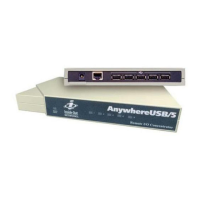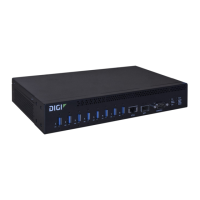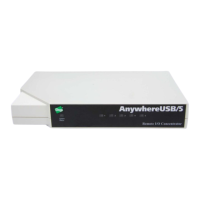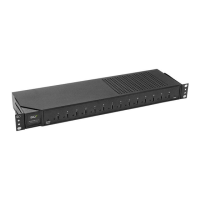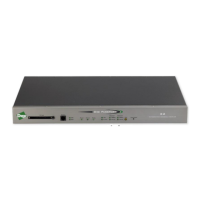Virtual Private Networks (VPN) IPsec
AnywhereUSB® Plus User Guide
565
17. Click to expand Local endpoint.
a. For Type, select either:
n
Default route: Uses the same network interface as the default route.
n
Interface: Select the Interface to be used as the local endpoint.
b. Click to expand ID.
i. Select the ID type:
n
Auto: The ID will be automatically determined from the value of the tunnels
endpoints.
n
Raw: Enter an IDand have it passed unmodified to the underlying IPsec stack.
For Raw IDvalue, type the ID that will be passed.
n
Any: Any ID will be accepted.
n
IPv4: The ID will be interpreted as an IP address and sent as an ID_IPV4_ADDR
IKE identity.
For IPv4 IDvalue, type an IPv4 formatted ID. This can be a fully-qualified
domain name or an IPv4 address.
n
IPv6: The ID will be interpreted as an IP address and sent as an ID_IPV6_ADDR
IKE identity.
For IPv6 IDvalue, type an IPv6 formatted ID. This can be a fully-qualified
domain name or an IPv6 address.
n
RFC822/Email: The ID will be interpreted as an RFC822 (email address).
For RFC822 ID value, type the IDin internet email address format.
n
FQDN: The ID will be interpreted as FQDN (Fully Qualified Domain Name) and
sent as an ID_FQDN IKE identity.
For FQDN ID value, type the IDas an FQDN.
n
KeyID: The ID will be interpreted as a Key ID and sent as an ID_KEY_ID IKE
identity.
For KEYIDID value, type the key ID.
n
MACaddress: The device's primary MACaddress will be used as the ID and
sent as a ID_KEY_ID IKEidentity.
n
Serial number: The device's serial number will be used as the ID and sent as a
ID_KEY_ID IKEidentity.
18. Click to expand Remote endpoint.
a. For IP version, select either IPv4 or IPv6.
b. For Hostname list selection, select one of the following:
n
Round robin: Attempts to connect to hostnames sequentially based on the list
order.
n
Random: Randomly selects an IPsec peer to connect to from the hostname list.
n
Priority ordered: Selects the first hostname in the list that is resolvable.
c. Click to expand Hostname.
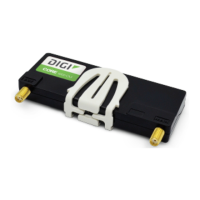
